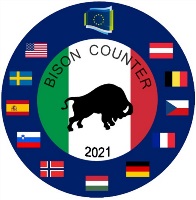SUMMARY
Bison Counter is a periodically organised multinational live exercise bringing together Counter-Improvised Explosive Devices (C-IED) teams and capabilities from European countries as well as the US. The exercise’s objectives are to exchange and train technical skills, to integrate and use available technical enablers at a tactical level and to implement the full C-IED operational cycle with a view to improving interoperability and resilience among European and Allied C-IED capabilities in their fight against a constantly evolving IED threat, both in military and counter-terrorism operations. Bison Counter is today the largest and most relevant EU exercise of the C-IED community. The aim is to develop common processes, techniques, procedures and interoperability requirements. Lessons learned from previous Bison Counter editions will also be raised and included in the operational part. In the same vein, the exercise will also serve as an experimentation and testing ground for new IED related assets, equipment and technologies.
Objective
The ultimate objective is to enable individual EU Member States, and with them the whole of the EU, to act in a more coherent, interoperable and resilient way against the ever-evolving IED threat, both on expeditionary military operations and in the context of countering terrorism within its borders.
ACTIVITY DESCRIPTION
The European Defence Agency (EDA) is closely involved in the organisation and running of the Bison Counter exercises which integrate EDA projects such as the Joint Deployable Exploitation and Analysis Laboratory (JDEAL), the European Center for Manual Neutralisation Capabilities (ECMAN) and the Military Search Capability Building (MSCB).
Enduring IED threat
IED threats remain high in many current theatres of operations and a critical challenge in any crisis management operation. They also represent a significant challenge to the freedom of manoeuvre, security of the population and protection of forces. To be able to face IED-threats effectively, Member States not only need the required technical skills and capabilities, but also a high level of interoperability, i.e. the ability to integrate and use them together in an international context. Bison Counter aims exactly at enhancing that interoperability among European C-IED actors, covering all domains (land, air & maritime) and the full spectrum of military operations, be it conventional, irregular or hybrid.
Bison Counter 2013 (The Netherlands)
Bison Counter’s first edition dates back to 2013, hosted by The Netherlands. 45 participants from 6 different nations (Austria, Hungary, Sweden, Belgium, Czech Republic, Netherland) participated in this first exercise.
Bison Counter 2016 (Sweden)
 The second edition was hosted by Sweden in 2016. More than 1,000 personnel from 21 countries and organisations as well as non-European observers participated in the multinational Counter Improvised Explosive Devices (C-IED) exercise Bison Counter 2016 (BC16). The exercise was hosted by the Swedish Armed Forces and the Swedish Göta Engineers Regiment from 15 to 27 August 2016. It was the first time the EDA’s Joint Deployable Exploitation and Analysis Laboratory (JDEAL) was successfully integrated into a multinational exercise. A Visitors Day with the participation of high-level guests from participating countries and organisations was organised on 26 August.
The second edition was hosted by Sweden in 2016. More than 1,000 personnel from 21 countries and organisations as well as non-European observers participated in the multinational Counter Improvised Explosive Devices (C-IED) exercise Bison Counter 2016 (BC16). The exercise was hosted by the Swedish Armed Forces and the Swedish Göta Engineers Regiment from 15 to 27 August 2016. It was the first time the EDA’s Joint Deployable Exploitation and Analysis Laboratory (JDEAL) was successfully integrated into a multinational exercise. A Visitors Day with the participation of high-level guests from participating countries and organisations was organised on 26 August.
The main aim of the exercise was to evaluate the full C-IED concept from the first responders’ perspective until delivery of C-IED related intelligence production, so as to tackle all C-IED work strands. A large number of different C-IED enablers ranging from Military Search, Military Working Dogs, Explosives Ordnance Disposal (EOD) and Improvised Explosive Devices Disposal (IEDD), EOD divers, Chemical Biological Radiological Nuclear and explosives (CBRNe) experts, Military Engineers and Weapon Intelligence Teams (WIT) from land, maritime and air domains took part in the exercise.
One of the key elements of the exercise was to practice the hand over process of responsibilities and duties in C-IED operations such as route clearance to EOD operators to WIT teams and the transfer of collected samples to the JDEAL. The exercise scenario foresaw training such processes in high threat environments and between multinational units.
The inclusion of the Joint Deployable Exploitation and Analysis Laboratory (JDEAL) marks the first time the laboratory deployed in its full operational mode. It was successfully integrated in the exercise chain of command. The laboratory was manned by around 30 JDEAL permanent staff, non-permanent staff, observers and trainees leading to the processing and exploitation of more than 50 cases which ranged from car bomb exploitation to cell phones and electronic media data recovery.
Bison Counter 2021 (Italy)
 The third edition of Bison Counter took place from 11 October - 6 November 2021 in Sardinia, Italy. A total of some 650 military staff from 10 EU Member States (Austria, Belgium, Czech Republic, France, Germany, Hungary, Italy, Slovenia, Spain, Sweden), as well as Norway and the United States participated in this exercise hosted by the Italian Armed Forces.
The third edition of Bison Counter took place from 11 October - 6 November 2021 in Sardinia, Italy. A total of some 650 military staff from 10 EU Member States (Austria, Belgium, Czech Republic, France, Germany, Hungary, Italy, Slovenia, Spain, Sweden), as well as Norway and the United States participated in this exercise hosted by the Italian Armed Forces.
As in previous editions, the exercises had actively integrated EDA projects such as the Joint Deployable Exploitation and Analysis Laboratory (JDEAL), the European Center for Manual Neutralisation Capabilities (ECMAN) and the Military Search Capability Building (MSCB).
It counted on the support of NATO’s C-IED Center of Excellence.
Bison Counter 21 gathered dedicated teams in the following enabler capabilities:
- Military Search
- Military Working Dogs
- Combat Engineering
- Route Clearance
- Explosive Ordnance Disposal/Improvised Explosive Device Disposal (EOD/IEDD)
- EOD Divers
- EOD Manual Neutralization Techniques (MNT) Teams
- Weapons Intelligence Teams (WIT)
- Level 2 Technical Exploitation, fully manned and operational Laboratory
- Combined Joint Task Force Headquarters
The exercise scenario was built up on a Crisis Management Operation (CMO) and spread around different locations in order to meet the specific requirements of the different technical domains. This also allowed to replicate the real-life operations challenges that the dispersion of means pose to Command and Control and Reporting, and in the particular case of C-IED, also to the handling and transportation of evidence collected from IED, its transport, chain of custody and exploitation.
Organised to allow the adequate Force Integration and Battle Staff Training, prior to the main phase of the Command Post and Field Exercise, Bison Counter 21 extended its duration for 5 weeks, thus assembling unique conditions for the sharing of information, lessons learned and best practice among multinational teams, bridging gaps and establishing the close human ties needed to foster meaningful cooperation among Member States – an interconnected federation of EU experts in the field of C-IED.
Bison Counter 2023 (Spain)

The “Live-Exercise Bison Counter 23 (BC23)” that took place in Zaragoza, Spain, from 08 to 18 November 2023, is pursuant to the objectives of the Bison Counter C-IED Exercises Capability Building (BC-EX) Cat B Project, one of the current EDA initiatives supporting the implementation of the EU Capability Development Priority “Develop C-IED and CBRNe Capabilities Based on newly available technology and training” (Ground Combat Capabilities, Enhance Protection of Forces module).
BC23 was built up in a Conventional Warfare scenario with asymmetric threats. It is a Field Training Exercise (FTX) at the Operational and Tactical Level which involves the deployment of a tailored Combined Joint Task Force Headquarters (CJTF-HQ), a Task Force (TF) C-IED, a maneuver Unit and the Joint Deployable Exploitation and Analysis Laboratory (JDEAL), reinforced by Navy, Air force and Law enforcement Units.
OBJECTIVES: TRAINING – INTEGRATING - TESTING & PROMOTING
- To Train
- the Interoperability between participating Members States (pMS)
- the full spectrum of the Counter Improvised Explosive Device (C-IED) concept in a multi-level (from tactical to operational) and multi-domain (land and maritime)
- technical and Tactical Exploitation (at level 1 and 2)
- the intelligence cycle: direction, collection, processing, and dissemination
- To integrate all work-strands by the EDA Project Team (PT) C-IED, e.g.: Joint Deployable Laboratory for Exploitation and Analysis (JDEAL), European Centre of Manual Neutralization Capabilities (ECMAN), Military Search Capability Building (MSCB)
- To test procedures (including reports), Hand Over-Take Over (HO-TO) procedures, Tactics, Technics and Procedures (TTP) among different units from pMS.
- To promote the identification of observations and best practices in the field of C-IED.
The aim of executing the BC23 exercise was to train the full spectrum of the C-IED concept in a multi-level (from tactical to operational) and a multi-domain (land and maritime) scenario where a multiplicity of activities belonging to the three (3) C-IED pillars1: Prepare the force, Attack the Network and Defeat the Device are connected among them; everything in a complete intelligence cycle which allows interconnection among all levels.
More exercises to come
It is the ambition of EDA’s participating Member States to pursue the series of Bison Counter exercises beyond the 2023 edition, in a structured, comprehensive and coherent manner. An important step in that direction was launched by 13 Member States, of a new EDA project already approved by EDA’s Steering Board in November 2019, which foresees at least two additional editions of Bison Counter in 2025 (The Netherlands) and 2027 (Sweden).
This project has also established a permanent Expert Team in charge of the planning of the exercises and its subsidiary activities, both at the conceptual and technical level, which allows the implementation of a consolidated Lessons Learned cycle, essential for moving towards an adequate harmonisation of capabilities and increased interoperability. Another ambition of the project is to seek inter-agency cooperation among all relevant C-IED stakeholders in the EU, including national and multinational Centres of Excellence, law enforcement and Industry.